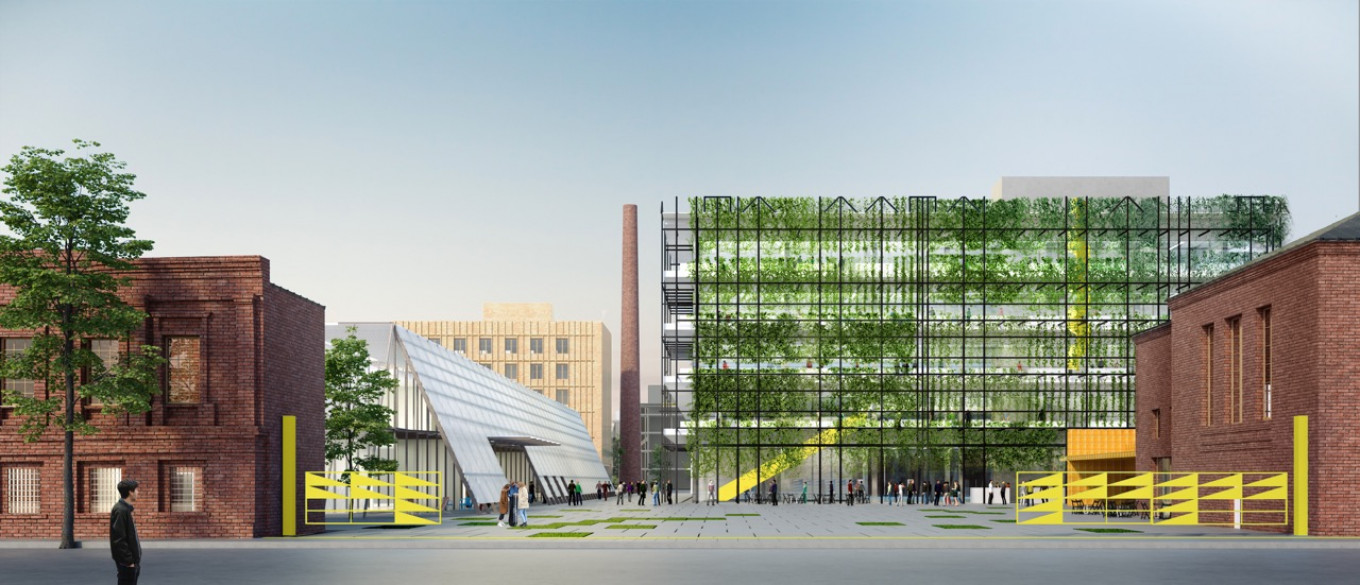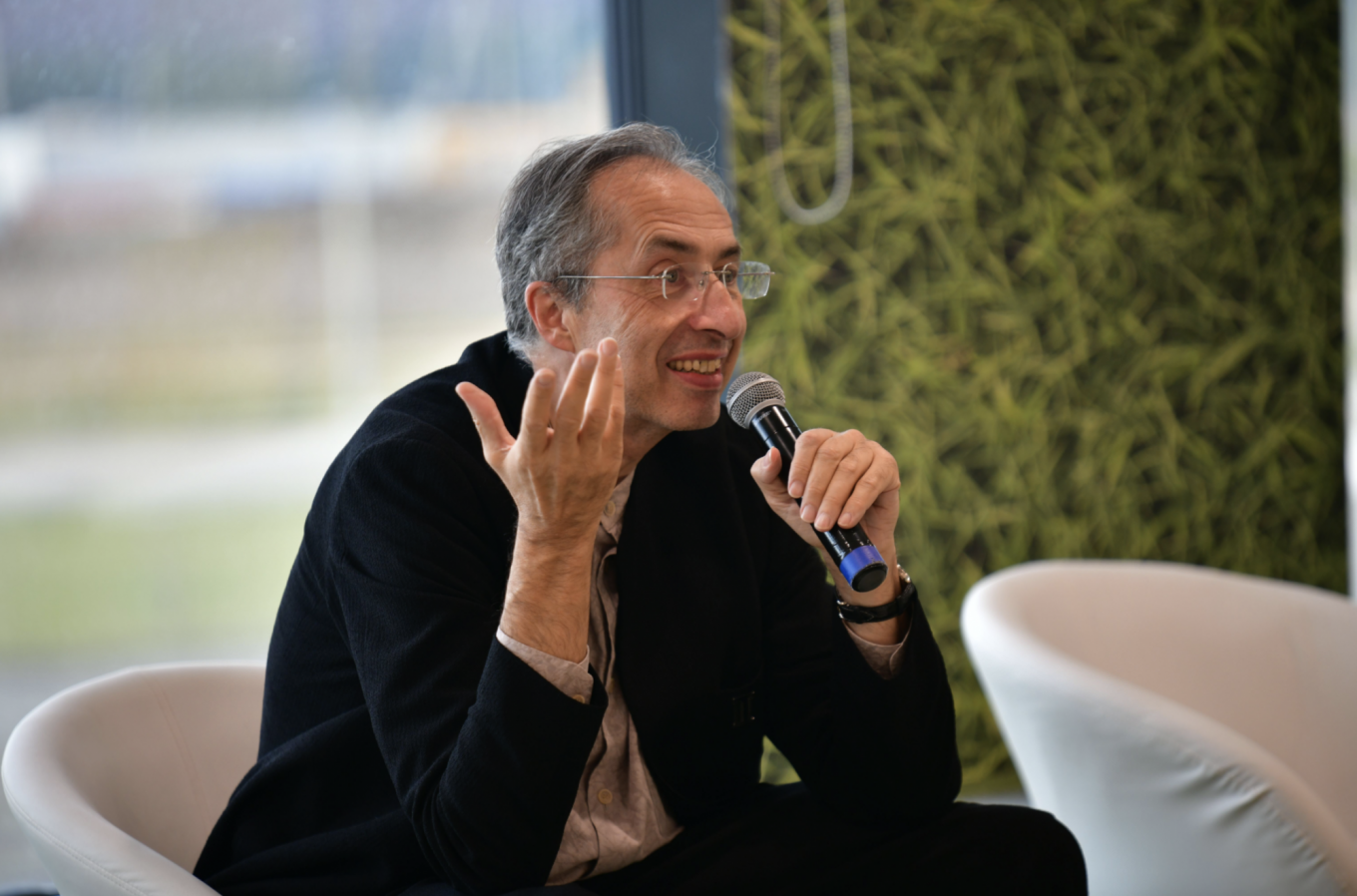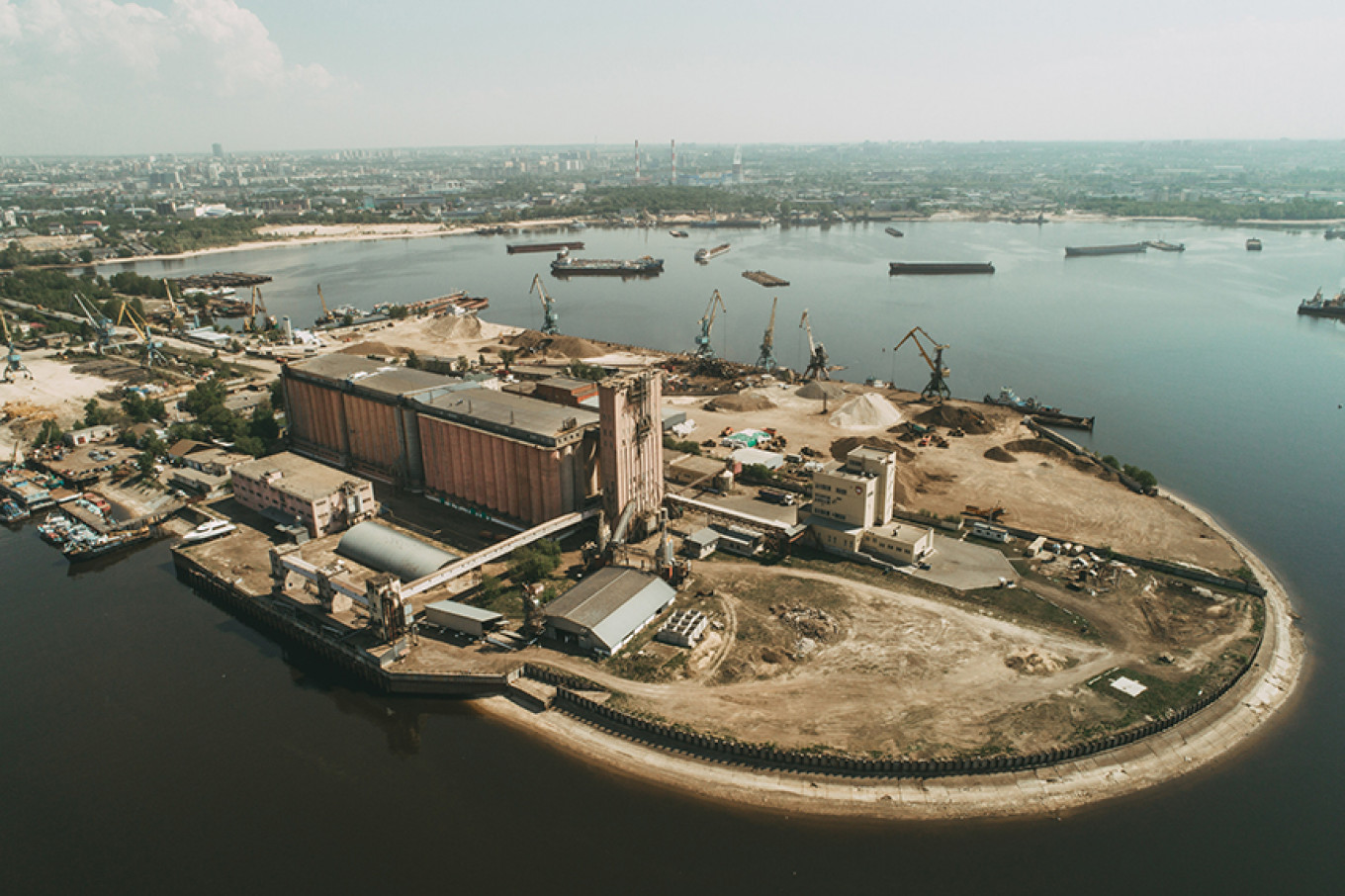The Russian Youth Architecture Biennale is the only competition for young architects in the world. First held in 2017 and now on its second run, the Biennale gives young architects a chance to reimagine the urban environment of Russia and to merge the old with the new.
This year after the first cut, 30 finalists from all over Russia submitted plans to redesign two old industrial spaces in the city of Kazan: a partially dilapidated production plant called the Santekhpribor factory, and a port elevator in the center of the city.
This was the first time the competition was based on real sites. Why industrial zones? For Sergei Choban, the curator of the Biennale, the idea behind the project was one of real-time relevance. “Almost every Russian city today faces the need to rethink them, and Kazan is no exception,” he explains. These industrial areas still have meaning even if the public has almost forgotten them. Choban says they “are an integral part of the history and cultural landscape of our cities and their identity.”
To win, the projects had to show respect for the history of the spaces, but also provide for a long-term, sustainable future. Four prizes were awarded. The gold prize for redesigning the Santekhpribor factory was awarded to Alexander Alyayev, and the group KB11 won the silver prize. For the port elevator project, the Leto group from Moscow won the gold prize and Megabudka received silver.
There are already plans to implement Alyayev’s project in the Santekhpribor factory plant.

The organizers of the Biennale consider it a great success story. From the first competition, the winners were accorded industry recognition and subsequently began to receive commercial design orders. By the time the second Biennale came around, there were more than twice the number of applicants — 739. For Choban, the figures show that “the architects believed in the Biennale as a working ‘social elevator’…our main task was to help them prove themselves and at the same time draw the attention of the regional authorities to the most promising young architects.”

Dimitri Pridokhenko, one of the winners from the Leto group, which is based in Ufa, helped redesign the port elevator site into a church, with a pool, market, and amphitheater in the square surrounding it. The group looked at historical cities and came to the conclusion that a church was a “city-forming element with a concentration of public life around it…a place for the exchange of knowledge,” says Pridokhenko. For Leto, the goal of the project was to “create maximum opportunities for the coexistence of different styles.”
Pridokhenko said that the Biennale project was especially important on a conceptual level. “The main problem for Russian architecture today is an outdated perception of the possibilities of our cities – the general idea of “how it should be” and “how it shouldn’t be,” he explains. “We are sad about how our cities are developing, and we wanted to show an alternative vision: how things can be.”
Perhaps the lack of innovation in Russian architecture is due to the fact that architects belong to the so-called “slow-professions,” where it may take decades before they are given the responsibility for large-scale projects. “The average age for career success is 33-40 years, which is significantly higher than in other careers,” says Pridokhenko. Choban echoes this sentiment in his curator’s statement, stating that market conditions push young architects into playing “a very insignificant role in shaping the appearance of Russian cities at present.”

For Choban, the “main driving force behind the biennale was the idea that young architects in Russia should be more actively involved in the process of actual design and construction.” Choban cites young Russian architects throughout history as proof — Vasily Bazhenov designing the Kremlin Palace at the age of 35, Konstantin Melnikov building the Soviet pavilion at the international exhibition in Paris when he was 35, too. “Modern Russian architects are no worse — why can’t they start at a younger age?” Choban asks.
For Alexander Alyayev, the winner of the Gold prize for his design of the Santekhpribor factory plant, the Biennale is an opportunity for young architects to be discovered in the community, and a chance for already successful architects to show their skills on a large-scale project. “It gave me the opportunity to compare myself to other architects, and gave me a sense of self-confidence,” says Alyayev.

In his revitalization project, Alyayev embraced the industrial heritage of the site not only by creating temporary pavilions that would halt the destruction of the historical buildings, but also by leaving reminders of the area’s heritage. Some of the industrial artifacts Alyayev left scattered around the property included arches made of pipes, parts of fences, as well as object-sculptures. Alyayev’s blueprint of the factory territory includes brick-work creative workshops, leisure-friendly courtyards, as well as residential and office buildings.

An exhibition of the winning projects was set to take place in March and April at the Aedes Architecture gallery in Berlin. However, due to the coronavirus pandemic, the winners were not able to go to Berlin and take part. But they seem to have taken isolation in stride. “Today’s situation with coronavirus is a time to pay attention to yourself,” Alyayev said.
You can view all the winning projects on the Biennale’s website.

Leave a Reply